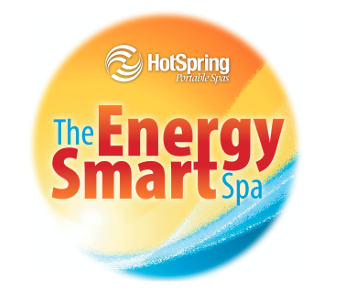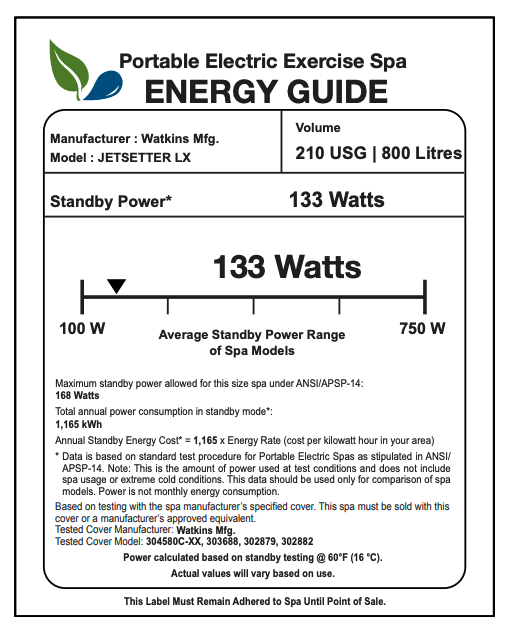Spa Pool Insulation Facts.
By Jason Ford, qualified Electrical Service Technician with 30 years experience in all areas of the spa industry.
All spa insulation is not created equal. Typically, every spa is going to be insulated in two ways, the top (cover), and the sides (area between the shell and exterior of the spa.
Covers
Covers can range from 1.0 lb. and 2.0 in foam density. The higher the number, the better hot tub insulation it will offer. Most manufacturers use 2.0 lb core density, however, some less expensive spas will cut costs by lowering the foam density, as well as quality of vinyl and stitching. For a premium price, hard shell covers are a custom option and offer the best insulation, as well as longer life. HotSpring Highlife spas use a 2.0 lb density core.
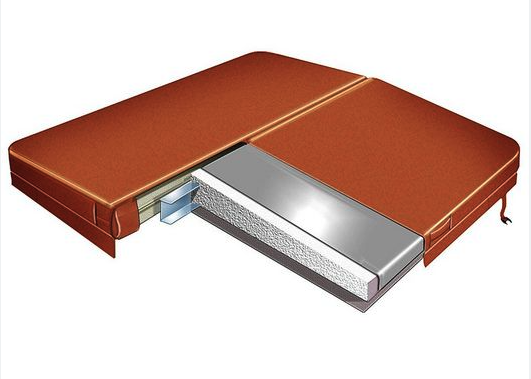
Insulation
Spa insulation, which is used inside of the spa cabinet, does vary, and often gets confusing. Below is information to help you understand the various insulation methods that are used, as well as a grade as to their effectiveness.
Separating FACT from FICTION
If a salesperson tells you to put 'Pink Batts' or similar in a spa if you are worried about energy use of a poorly insulated spa, ignore this absurd advice. Pink Batts and similar are designed for air cavities in walls. Spa pools require much denser insulation to be effective as water looses heat far more rapidly and easily. Pink Batts are not designed for insulating spa pools. Pink batts inevitably get water logged and become useless. Ask yourself this question, if Pink Batts are all that's required why hasn't the manufacturer all ready done this? Salespeople will also often say 'what if your fully foamed spa leaks' The answer to this question is simple. A fully insulated spa is 10 x more effective at preventing leaks as the plumbing and structure is supported. The professional ISO manufacturer's fully foam their spas as it is the best way to prolong the life of the spa and substantially reduce energy bills. Furthermore, all leaks can be repaired in spas, with or without insulation what is important here is having a local company standing behind the product you buy (not relying on subcontractors) to be there for you during the course of your spa ownership. Spas do require maintenance. Think of them like owning a chainsaw or other outdoor appliance.
Separating FACT from FICTION
If a salesperson tells you to put 'Pink Batts' or similar in a spa if you are worried about energy use of a poorly insulated spa, ignore this absurd advice. Pink Batts and similar are designed for air cavities in walls. Spa pools require much denser insulation to be effective as water looses heat far more rapidly and easily. Pink Batts are not designed for insulating spa pools. Pink batts inevitably get water logged and become useless. Ask yourself this question, if Pink Batts are all that's required why hasn't the manufacturer all ready done this? Salespeople will also often say 'what if your fully foamed spa leaks' The answer to this question is simple. A fully insulated spa is 10 x more effective at preventing leaks as the plumbing and structure is supported. The professional ISO manufacturer's fully foam their spas as it is the best way to prolong the life of the spa and substantially reduce energy bills. Furthermore, all leaks can be repaired in spas, with or without insulation what is important here is having a local company standing behind the product you buy (not relying on subcontractors) to be there for you during the course of your spa ownership. Spas do require maintenance. Think of them like owning a chainsaw or other outdoor appliance.
INSULATION TYPES
Type: No Insulation
Grade: F
Believe it or not, but there are spas that are manufactured without any insulation between the shell and exterior. They are rare, but they do exist. These spas are typically made inexpensively in China, and can often be found for sale on the internet and warehouse only sales. Don’t be fooled by words that say “insulated spa” but never mention what type of insulation is used. They may just be referring the the cover that it comes with. Spas with no insulation will result in higher energy cost, as well as potential problems with shell cracks as there is no support. this can sometime be called 'tri-layer or Quad layer insulation' which is acrylic, resin, and fibreglass cloth in total about 5-10mm thick. Avoid spas made like this at all costs unless you are prepared to pay excessive energy bills.
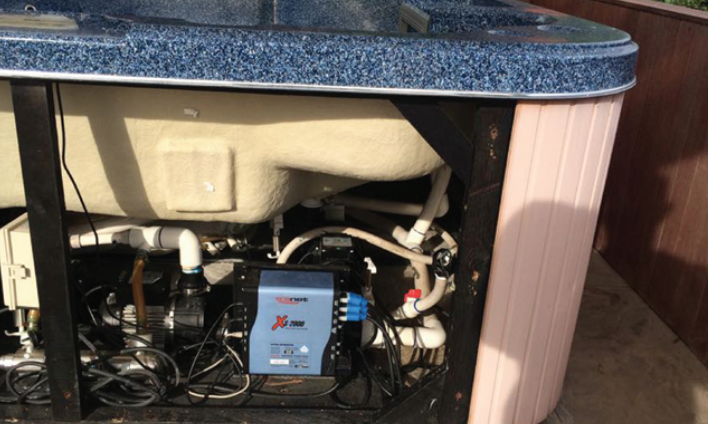


Type: Thermal Wrap or Blanket
Grade: D
This very commonly found spa insulation practice consists of an insulation blanket being wrapped along the lining of the shell and/or inside exterior walls. There is a large void of space that is exposed. This spa pool insulation method is often compared to that of what is standard for insulating refrigerators. What it fails to mention is that it is not used for insulation of industrial freezers. Instead full foam insulation is used for this application. It is not as energy efficient as other methods, and does not provide strength support for the shell, or the spa siding. Think of this like putting on a thin raincoat to go out in the snow in winter. Not very effective at keeping you warm.

Type: Partial Urethane Foam Insulation
Grade: D
This spa pool insulation method is by far the most common found in new spa pools in New Zealand. A layer of foam insulation is sprayed on the inner lining of the shell. It provides about the same level of insulation as the thermal wrap, with one advantage. The foam will add strength to the shell. Often consumers misunderstand the specifications and mistake partial foams as being full foam. You will know it is a partial foam application if the word “full” is not used in the specs. Often referred to as 'Quad Layer Insulation' as there is a 2mm acrylic shell, 1mm epoxy layer resin, 1mm fibreglass cloth, a 25mm layer of polyurethane foam (one inch) Note: this is almost standard shell construction on all spas. This insulation method is similar to that used in the 1980's for in-ground spas. It is a very poor insulation method.
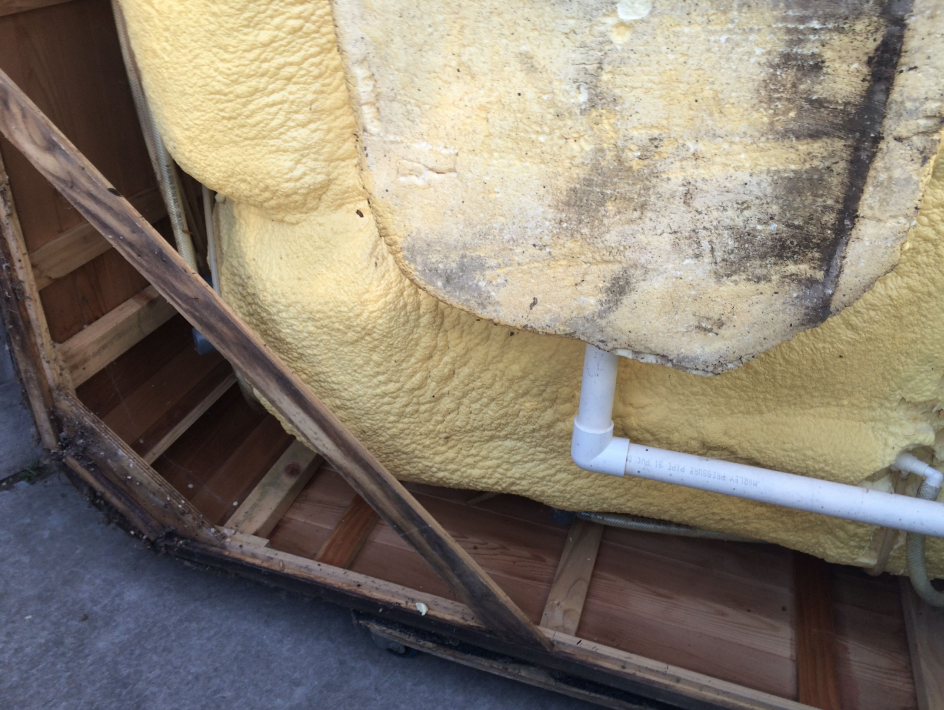
Type: Full Urethane Foam Insulation 2lb
Grade: C (Hot Spring Spas NZ Made spas)
This spa pool insulation is not commonly found in many spa brands. This is a very good insulation system. Not only does it provide good hot tub insulation, but the support t
hat it pr
ovides for both the shell and the plumbing will result in fewer leaks and a greater chance that the shell does not weaken and crack over time. Do not be worried by claims that plumbing repairs are more difficult and costly due to trying to work around the foam. Instead find comfort in the knowledge that yo
ur spa will experience far fewer plumbing leaks due to the added support that the lines have. The vibration of lines is most often what causes a leak, and spas with full foam experience 10 times fewer leaks that those without foam.
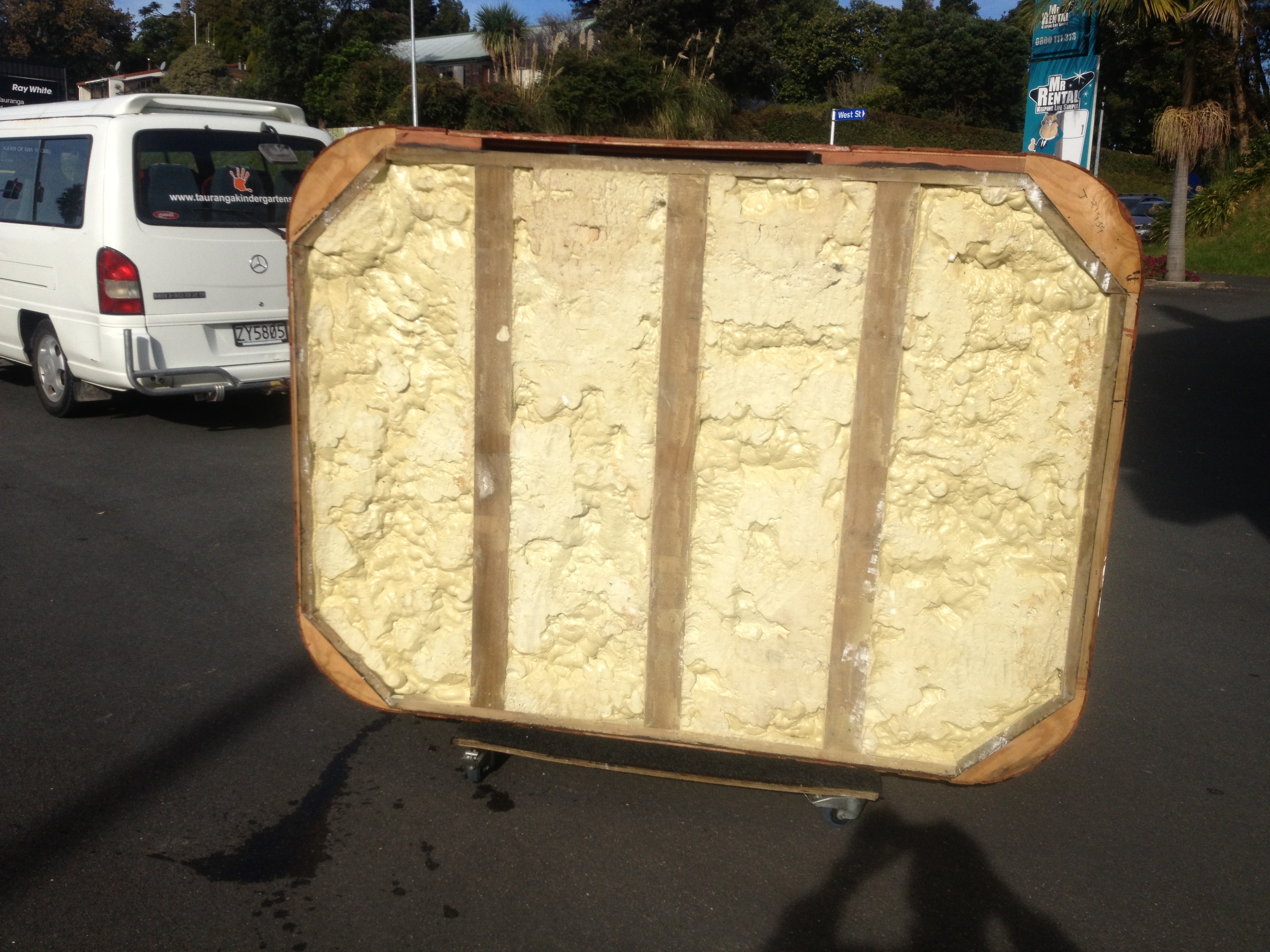
Type: FiberCor Insulation
Grade: B (HOT SPRING SPAS NZ & USA Made Spas)
Relatively new to the market, FiberCor is a great answer for consumers who have concerns with full foam and the potential of costly leak repairs. FiberCor has four times the density of the urethane foam used in most hot tubs. It’s a loose, wool-like fiber that fills all voids and gaps in our hot tub compartments for better insulating efficiency than any other hot tub. It is also very easy to remove, making future repairs easier then full foam. Environmentally friendly from a manufacturing perspective and incredibly good insulation.

Type: Multi Density and Multi Layered Full Urethane Foam
Grade: A (HOT SPRING SPAS NZ & USA Made Spas)
This is the best hot tub insulation available in spa pools. It is fantastic at retaining the heat in the water and providing your spa shell and the equipment with the absolute best support against plumbing leaks and cracks in the shell.
This system begins with a 60lb foam being shot onto the shell lining, making the shell stronger than others. It is then followed by multiple layers of foam of a variety of densities providing over all density that is greater then 2lb. Many consumers ask, why don’t other spas just use a 4lb or 6lb full foam to achieve better insulation, and it is is because of the foams expansion. The expansion of using a 2lb foam to fill the spa will not cause damage to the shell or exterior. However, if a spa is filled entirely with, lets say 4lb foam, it will expand and likely cause damage over time to the spa. Using a variety of density foam in multiple layers allows the foam to expand into each other, creating an all higher rating of density. Due to the increased cost of assembly time and assembly space needed to achieve this system, is not commonly used when manufacturing spas.

Have a look inside the Vista, California Factory at the efforts
they make to insulate HotSpring Spas.
Other Factors Worth Considering
Heaters & Filtration System
Heater size has almost nothing to do with energy efficiency. Be careful of nonsense terms like 'thermal tuning' or 'hybrid heat pump' The physics are basic.
Heaters & Filtration System
Heater size has almost nothing to do with energy efficiency. Be careful of nonsense terms like 'thermal tuning' or 'hybrid heat pump' The physics are basic.
You need a pump to pull water through the spa filter system, the heater and then back to the spa. A smaller heater will take longer to heat the spa from cold. A small heater may not keep up with the amount of rapid heat loss in spas insulated with Grade D and F insulation. They will need big heater elements to keep your spa hot when you are in it.
A well insulated spa as in Grade A,B,C above can utilise a small heater as these spas do not have rapid heat loss. A small heater is sufficient to keep them hot and ready 24/7 even in snow conditions due to the insulation properties retaining the energy in the spa water.
Circulation Pumps (if present)
Circulation Pumps (if present)
A circulation pump is found on some spa brands. It is a smaller pump typically than the bigger pool pumps (often 2Hp - 1500 watt) used to push water through the jets for massage. The idea of a circulation pump is to reduce the noise and cost of heating a spa. The cost can be reduced as a smaller pump with a lower wattage will use less energy to pull the water through the filters and heater than back to the spa. The bigger pumps are left for the jets when you are in the spa. There are two types of circulation pump; magnetic without bearings and centrifugal which is a smaller version of a regular spa pool pump.
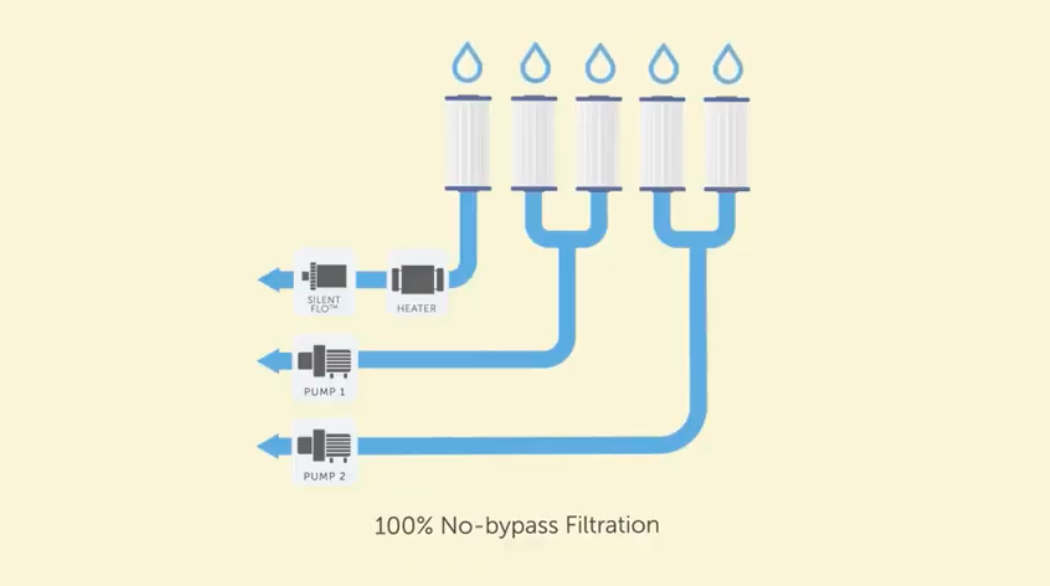
A) 226watt - 298 watt (1/3 - 1/4 hp centrifugal circulation pump)
These pumps are not designed to run 24 /7 and though they are quieter than their big brother 2Hp jet pumps they use the same seals and bearings. They are not designed to filter the water 24 hours per day however, as this would quickly wear out the ceramic seal in the pump causing a leak. They are programmed via the spa control panel to filter the water for around 6 hours per day. They also run outside these times when the spa thermostat calls for heating of the water. This happens more often when it's colder (eg night time and winter)
This type of system is complicated, difficult to program and these pumps have a high failure rate in this application. As there are 2 mechanical bearings and a ceramic seal inside this type of motor/pump combination, they last about 4 years in my experience in this application.
If these pumps were to run 24/7 they would cost $38 per week (at 30c per kWh). Just for filtration and pushing the water through the heater. If you assume this type of pump runs for 6 hours per day (minimum) the filtration cost per week would be just over $9 per week or $40 per month.

B) 39 watt magnetic drive circulation pump (exclusive to HotSpring Highlife and Limelight spas)
A small magnetic circulation pump is used in HotSpring Highlife and Limelight models. It uses 39 watts of power (about the same as an old style light bulb). It has no ceramic seal or mechanical bearings so is therefore virtually silent and maintenance free. It is designed to run 24/7 therefore has the best filtration time and thus water quality. This system is particularly effective when ozone systems are added as the ozone system will also run 24/7 reducing sanitiser use to almost nothing. The cost to run this type of pump 24/7 is $6.50 per week (at 30c per kWh). This is the best system available on the market and has been in use exclusively by HotSpring Spas since 1991.
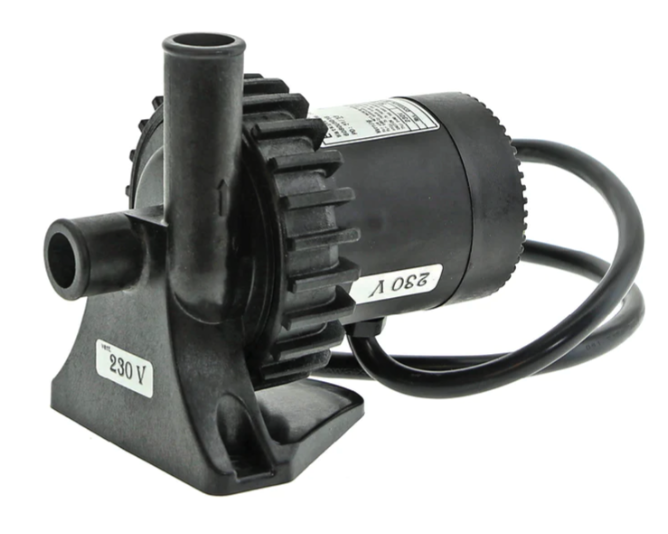

C) Jet Pumps and two speed Jet Pumps
A spa can have one, two sometimes three jet pumps. They are usually 1.5, 2 or even 2.5hp (1119w, 1492w, 1865w) These pumps are generally used when you are in the spa and want water pressure from the jets. More jets require more pumps, which equals more noise, more power consumption and more maintenance. Some spas use a 2hp pump that also has a low speed (roughly a quarter of the speed and HP) and this low speed is used exclusively for filtration and heating (much like the job being done with the 1/3-1/4 HP centrifugal pump in example A) above.
Heaters
A spa heater element relies on one of the pump types above to push water through it. the heater will turn the spa on and make it run when it needs to reheat. This is more often at night and in winter due to the colder outdoor temperature. An element can be as small as 1000w (30c per hour) or 6000w for a commercial spa where the cover is off all day (like at an old folks home). Typically 1500w or 2000w heater elements are normal for most well insulated spas. Hot Spring Spas have a very large 7 person spa, the Prism, with 1990 litres. Even this huge spa uses a 1500w heater as the spa is so well insulated this small heater and the spas 39w circulation pump can keep up with the heat loss in most situations.
Blowers
A Vacuum Cleaner motor bubbles up the water like a volcano, no jet pressure, air only without water is forced through a series of jets via a manifold system. These can increase the number of 'jets' in the spa but in reality they often just cool the spa down and decrease it's energy efficiency. Stay clear of these systems.
A Vacuum Cleaner motor bubbles up the water like a volcano, no jet pressure, air only without water is forced through a series of jets via a manifold system. These can increase the number of 'jets' in the spa but in reality they often just cool the spa down and decrease it's energy efficiency. Stay clear of these systems.
Power Requirements
A well designed spa should not require a power supply greater than 20 amps. Avoid any spa that requires a power supply greater than 20amps, it will be very expensive to run. It will have a large heater to keep up with heat loss from poor insulation and many jet pumps and possibly also a blower. The best family spas should only draw 15 or 20amps maximum.
A well designed spa should not require a power supply greater than 20 amps. Avoid any spa that requires a power supply greater than 20amps, it will be very expensive to run. It will have a large heater to keep up with heat loss from poor insulation and many jet pumps and possibly also a blower. The best family spas should only draw 15 or 20amps maximum.
Summary
Don't be fooled by marketing jargon particularly from the online retailers - spa pool energy efficiency is basic physics. A spa pool that is insulated well with grade A,B, or C insulation, and a good quality cover, that does not need a large power supply will be energy efficient. Everything else will likely have eye watering power consumption quickly offsetting any savings on the purchase price.
Hot Spring have 40 years in the industry and have the exclusive features mentioned above which have made them the market leader and subsequently the world's No.1 Selling energy efficient spa pool brand.


